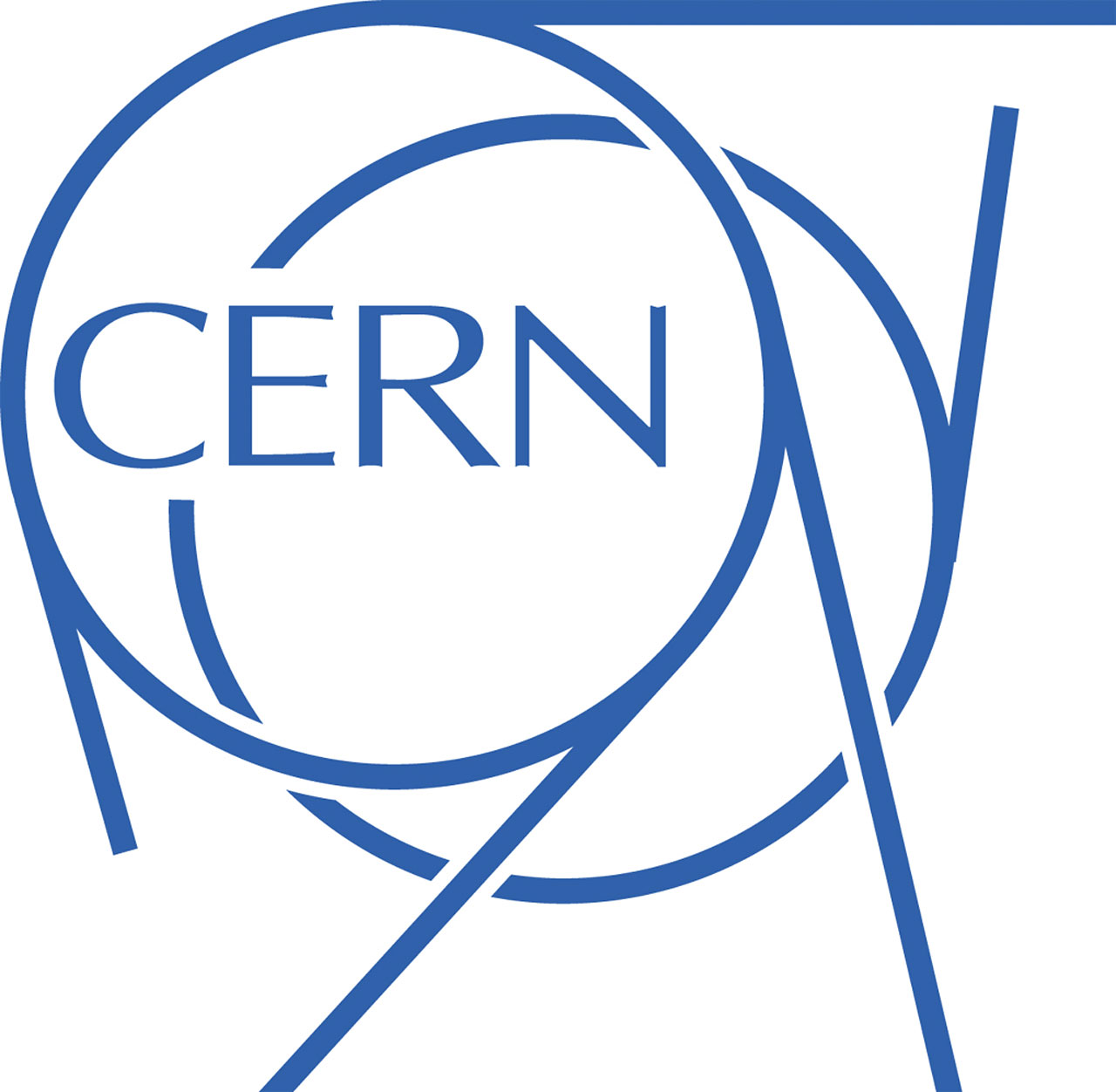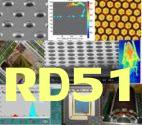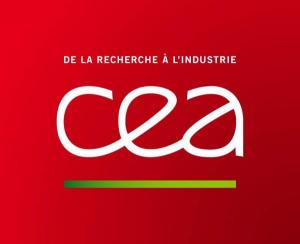MicroPattern Gaseous Detectors Conference 2019
salle Casoar-Tadorne
La Rochelle
The 6th International Conference on Micro Pattern Gaseous Detectors, MPGD19, takes place between May 5th and May 10th 2019 in La Rochelle, France.
The conference was held previously in Kolympari, Greece (2009), in Kobe, Japan (2011), Zaragoza, Spain (2013), Trieste, Italy (2015), and Philadelphia, USA (2017). This year’s conference is co-organized by CEA, CNRS and GANIL, and receives support from RD51 at CERN.
The scientific program addresses new developments in :
- MPGDs
- detector physics
- detector performances
- simulations and software
- applications
- electronics
- production techniques
Poster sessions and industrial exhibitions will take place on the first three days and during the coffee breaks. In the afternoon of Thursday, the social event will take us off the coast to the islands around La Rochelle. Friday morning is devoted to RD51 discussions and talks about future developments.








-
-
18:00
Arrival of the participants and installation at the hotels City
City
La Rochelle
-
18:00
-
-
08:30
Registration - Welcome coffee - Poster hanging Hall Atalante (Espace Encan)
Hall Atalante
Espace Encan
La Rochelle -
1
RD51 activities and perspectivesSpeaker: Maximilien Chefdeville (Centre National de la Recherche Scientifique (FR))
-
2
MPGD-based photon detectors for the upgrade of COMPASS RICH-1 and beyond salle Casoar-Tadorne
salle Casoar-Tadorne
La Rochelle
Espace EncanSpeaker: Silvia Dalla Torre (Universita e INFN Trieste (IT)) -
3
Development of new MPGD structures for nuclear physics applications salle Casoar-Tadorne
salle Casoar-Tadorne
La Rochelle
Espace EncanSpeaker: Marco Cortesi (National Superconducting Cyclotron Laboratory) -
4
R&D on THGEM with Resistive Diamond-like carbon coating salle Casoar-Tadorne
salle Casoar-Tadorne
La Rochelle
Espace EncanSpeaker: Guofeng Song (University of Science and Technology of China) -
5
Recent advances with RPWELL Detectors – physics and potential applications salle Casoar-Tadorne
salle Casoar-Tadorne
La Rochelle
Espace EncanSpeaker: Dr Arindam Roy (Ben-Gurion University) -
6
Test of the first MPGD-based (S)DHCAL salle Casoar-Tadorne
salle Casoar-Tadorne
La Rochelle
Espace EncanDigital and Semi-Digital Hadronic Calorimeters (S-DHCAL) were suggested for future Colliders as part of the particle-flow concept. Though studied mostly with RPCs, MPGD-based sampling elements could significantly improve the calorimeter performance thanks to their proportional response.
In 2018, several large-area resistive Micromegas and Resistive Plate WELL (RPWELL) of 48x48$~$cm$^{2}$ were tested at CERN. The performance of the first produced detectors were studied with high energy particles delivered by the SPS machine. Then, all detectors were grouped with steel absorber plates into a small MPGD-based SDHCAL prototype which recorded hadronic showers of low-energy pions from the PS.
The response of the individual sampling elements and of the calorimeter will be reported. For the former, emphasis will be put on MIP efficiency and hit multiplicity, spatial uniformity, HV stability, and rate effects. The calorimeter response is derived from data samples recorded at different pion momenta, from 2 to 6 GeV/c. To minimise leakage at the rear of the calorimeter, pions showering in the first layers were selected. This way, the energy resolution of the prototype could be assessed as well. Results will be shown and when possible, compared to simulated ones.
Speaker: Dan Shaked Renous (Weizmann Institute of Science (IL)) -
7
Performances of the Micromegas Vertex Tracker at the CLAS12 experiment for the 2017-2018 physics run salle Casoar-Tadorne
salle Casoar-Tadorne
La Rochelle
Espace EncanSpeaker: Maxence Vandenbroucke (Université Paris-Saclay (FR)) -
12:30
Lunch Ilates, Chassiron and Richelieu
Ilates, Chassiron and Richelieu
La Rochelle
Espace Encan -
8
Development of μ-PIC with glass substrate aiming at high gas gain salle Casoar-Tadorne
salle Casoar-Tadorne
La Rochelle
Espace EncanSpeaker: Mitsuru Abe (Kyoto university) -
9
Production of Micromegas and progress on the HV stability issues salle Casoar-Tadorne
salle Casoar-Tadorne
La Rochelle
Espace EncanSpeaker: Giada Mancini (INFN e Laboratori Nazionali di Frascati (IT)) -
10
VMM3a, an ASIC for tracking detectors salle Casoar-Tadorne
salle Casoar-Tadorne
La Rochelle
Espace EncanSpeaker: George Iakovidis (Brookhaven National Laboratory (US)) -
11
New Physics frontiers and future accelerators salle Casoar-Tadorne
salle Casoar-Tadorne
La Rochelle
Espace EncanSpeaker: Maksym Titov (Université Paris-Saclay (FR)) -
15:30
Coffee break Hall Atalante (Espace Encan)
Hall Atalante
Espace Encan
Espace Encan -
12
CMS Phase II Upgrade with GEM detectors salle Casoar-Tadorne
salle Casoar-Tadorne
La Rochelle
Espace EncanSpeaker: Mohit Gola (University of Delhi (IN)) -
13
Production, Quality Control and Performance of GE1/1 Detectors for the CMS Upgrade salle Casoar-Tadorne
salle Casoar-Tadorne
La Rochelle
Espace EncanSpeaker: Rosamaria Venditti (Universita e INFN, Bari (IT)) -
14
Lessons Learnt from the GE1/1 Slice test salle Casoar-Tadorne
salle Casoar-Tadorne
La Rochelle
Espace EncanSpeaker: Brian Dorney (Universite Libre de Bruxelles (BE)) -
17:00
City tour
-
19:00
RD51 Management Board salle Casoar-Tadorne
salle Casoar-Tadorne
La Rochelle
Espace Encan
-
08:30
-
-
15
A scalable High Voltage power supply system with SoC control for Micro Pattern Gaseous Detector salle Casoar-Tadorne
salle Casoar-Tadorne
La Rochelle
Espace EncanSpeaker: Stefano Levorato (Universita e INFN Trieste (IT)) -
16
Recent Development of Glass GEMs and Their Uses salle Casoar-Tadorne
salle Casoar-Tadorne
La Rochelle
Espace EncanSpeaker: Takeshi Fujiwara (National Institute of Advanced Industrial Science & Technology ) -
17
Development and Properties of 100 mm-square size LTCC-GEM salle Casoar-Tadorne
salle Casoar-Tadorne
La Rochelle
Espace EncanSpeaker: Yoko Takeuchi (Tokyo Metropolitan Industrial Technology Research Institute) -
18
Neutrino physics : current and future experiments salle Casoar-Tadorne
salle Casoar-Tadorne
La Rochelle
Espace EncanSpeaker: Kam-Biu Luk -
10:30
Coffee break Hall Atalante (Espace Encan)
Hall Atalante
Espace Encan
-
19
Small-pad resistive Micromegas: Comparison of patterned embedded resistors and DLC based spark protection systems salle Casoar-Tadorne
salle Casoar-Tadorne
La Rochelle
Espace EncanSpeaker: Mauro Iodice (INFN - Sezione di Roma Tre) -
20
Correlation of optical and electrical measurements of the delayed discharge propagation in GEM detector salle Casoar-Tadorne
salle Casoar-Tadorne
La Rochelle
Espace EncanSpeaker: Mrs Antonija Utrobicic (University of Zagreb, Faculty of Science) -
21
A numerical investigation on the discharges in Micromegas salle Casoar-Tadorne
salle Casoar-Tadorne
La Rochelle
Espace EncanSpeaker: Deb Sankar Bhattacharya (Julius Max. Universitaet Wuerzburg (DE)) -
22
Study of discharges and their effects in GEM detectors salle Casoar-Tadorne
salle Casoar-Tadorne
La Rochelle
Espace EncanSpeaker: Jeremie Alexandre Merlin (CERN) -
23
SRS VMM readout for Gadolinium GEM-based detector prototypes for the NMX instrument at ESS salle Casoar-Tadorne
salle Casoar-Tadorne
La Rochelle
Espace EncanSpeaker: Michael Lupberger (CERN) -
12:40
Lunch Ilates, Chassiron and Richelieu (Espace Encan)
Ilates, Chassiron and Richelieu
Espace Encan
-
14:00
Poster session Hall Atalante (Espace Encan)
Hall Atalante
Espace Encan
La Rochelle -
24
Picosecond timing detectors and applications salle Casoar-Tadorne
salle Casoar-Tadorne
La Rochelle
Espace EncanSpeaker: Jerry Va'vra (SLAC) -
25
Recent Developments on Precise Timing with the PICOSEC Micromegas Detector salle Casoar-Tadorne
salle Casoar-Tadorne
La Rochelle
Espace EncanSpeaker: Ioannis Manthos (Aristotle University of Thessaloniki) -
26
Recent photocathode and sensor developments for the PICOSEC micromegas detector salle Casoar-Tadorne
salle Casoar-Tadorne
La Rochelle
Espace EncanSpeaker: Xu Wang (University of Science and Technology of China (CN)) -
27
Diamond Like Carbon for the Fast Timing MPGD salle Casoar-Tadorne
salle Casoar-Tadorne
La Rochelle
Espace EncanSpeaker: Piet Verwilligen (Universita e INFN, Bari (IT)) -
28
Development of GEM based Transition Radiation Detector and Tracker (GEM-TRD/T) salle Casoar-Tadorne
salle Casoar-Tadorne
La Rochelle
Espace EncanSpeaker: Kondo Gnanvo (University of Virginia (US)) -
29
Laser ablation as a novel manufacturing technique of high-precision 1D- and 2D-readout boards for Micro-Pattern Gaseous Detectors (cancelled-included in next talk) salle Casoar-Tadorne
salle Casoar-Tadorne
La Rochelle
Espace EncanSpeaker: Stephan Aune (CEA/IRFU,Centre d'etude de Saclay Gif-sur-Yvette (FR)) -
30
New Developments in MPGDs for a Future Electron Ion Collider salle Casoar-Tadorne
salle Casoar-Tadorne
La Rochelle
Espace EncanSpeaker: Bob Azmoun (Brookhaven National Laboratory)
-
15
-
-
31
Development of resistive Micromegas TPCs for the T2K experiment salle Casoar-Tadorne
salle Casoar-Tadorne
La Rochelle
Espace EncanSpeaker: David ATTIE (CEA/DSM/DAPNIA/SPP) -
32
A new scheme for Micromegas TPC readout : the encapsulated resistive anode with reverse grounding salle Casoar-Tadorne
salle Casoar-Tadorne
La Rochelle
Espace EncanSpeaker: Paul Colas (Université Paris-Saclay (FR)) -
33
A high-gain and low ion-backflow double micro-mesh gaseous structure salle Casoar-Tadorne
salle Casoar-Tadorne
La Rochelle
Espace EncanSpeaker: Jianbei Liu (University of Science and Technology of China (CN)) -
34
TPC technologies using MPGDs salle Casoar-Tadorne
salle Casoar-Tadorne
La Rochelle
Espace EncanSpeaker: Piotr Gasik (Technische Universität Muenchen (DE)) -
10:30
Coffee break Hall Atalante (Espace Encan)
Hall Atalante
Espace Encan
La Rochelle -
35
dE/dx Resolution Studies of a Pre-Production Read Out Chamber for the ALICE GEM TPC salle Casoar-Tadorne
salle Casoar-Tadorne
La Rochelle
Espace EncanSpeaker: Thomas Klemenz (Technische Universitaet Muenchen (DE)) -
36
Study of a passive gating grid for IBF suppression salle Casoar-Tadorne
salle Casoar-Tadorne
La Rochelle
Espace EncanSpeaker: Vladislav Zakharov -
37
Low-pressure TPC with THGEM readout for ion identification in Accelerator Mass Spectrometry salle Casoar-Tadorne
salle Casoar-Tadorne
La Rochelle
Espace EncanA new technique for ion identification in Accelerator Mass Spectrometry (AMS) has been proposed based on measuring the ion track ranges using a low-pressure time projection chamber (TPC). As a proof of principle, the low-pressure TPC with charge readout using a THGEM multiplier was developed. The tracks of alpha-particles from various radioactive sources were successfully recorded in the TPC. The track ranges were measured with a rather high accuracy, reaching 3%. Using these results and SRIM code simulation, it is shown that the isobaric boron and beryllium ions can be effectively separated at the 10 sigma level. This technique is expected to be applied in the AMS facility in Novosibirsk for dating geological objects, in particular for geochronology of Cenozoic Era.
Speaker: Tamara Shakirova (Budker Institute of Nuclear Physics) -
38
Development of a Time Projection Chamber for Hadron Experiments at J-PARC salle Casoar-Tadorne
salle Casoar-Tadorne
La Rochelle
Espace EncanSpeaker: Shinhyung Kim -
12:30
Lunch Ilates, Chassiron and Richelieu (Espace Encan)
Ilates, Chassiron and Richelieu
Espace Encan
La Rochelle -
14:00
Poster session Hall Atalante (Espace Encan)
Hall Atalante
Espace Encan
La Rochelle -
39
MPGD applications outside high energy physics salle Casoar-Tadorne
salle Casoar-Tadorne
La Rochelle
Espace EncanSpeaker: Florian Maximilian Brunbauer (CERN, Vienna University of Technology (AT)) -
40
Development of novel ultra-thin Micromegas and a Time Projection Chamber for animal ion transmission tomography salle Casoar-Tadorne
salle Casoar-Tadorne
La Rochelle
Espace EncanSpeaker: Jona Bortfeldt (CERN) -
41
ACTAR TPC: a tool for nuclear physics applications salle Casoar-Tadorne
salle Casoar-Tadorne
La Rochelle
Espace EncanThe ACTAR TPC (Active Target & Time Projection Chamber) is a detector developed for fundamental nuclear physics studies such as nuclear reaction and structure studies as well as exotic decay and proton emission studies. It results from the joint efforts to build a second generation gaseous target and detector that merges the advantages of the first generation active target MAYA based on wire amplification and the CENBG TPC based on GEMs.
In addition to specific developments concerning the high density collection plane (with 16k pads) and the active volume, the device is equipped with the GET electronics that allows for time sampling of signal of each pad for a full 3D reconstruction of tracks. The pad planes are equipped with 128 and 256 µm bulk micromegas (64x128 mm2) either on standard PCB or on a specific metal-core PCD. After the realization of demonstrator detectors that have been tested in various conditions including in beam tests, the final detectors (2 pad plane geometries have been designed) are now almost completed, with in-beam commissioning runs at GANIL, for active target and decay detector modes of the device.
We propose to present the characteristics of the detector in terms of particle tracking and energy analysis, resulting from the various source and beam test measurements. We will also address the issues related to the gas used in Active Targets.
The ACTAR TPC device is planned to be used in 2 experiments at GANIL in 2019.
Speaker: Thomas ROGER (Grand Accelerateur National d'Ions Lourds (FR)) -
42
GEM detectors for the MAGIX focal plane: minimising materials for low energy experiments salle Casoar-Tadorne
salle Casoar-Tadorne
La Rochelle
Espace EncanThe new MAGIX experiment, to be built at the 105 MeV line of the ERL MESA at the institute for Nuclear Physics of the University of Mainz, features two high-resolution spectrometers looking at the target area where luminosity of the order of $10^{35} \text{cm}^{-2}\text{s}^{-1}$ will be achievable. To improve the momentum and angular resolution of the spectrometers, the greatest challenge is to minimise the material budget of their GEM-based focal plane detectors as much as possible.
In this talk we will present the solutions we developed to build a high-resolution MPGD tracker for those experimental conditions including a foil based readout plane with Chromium-GEM amplification and a short-drift TPC with an open field cage, the latter being the solution finally approved for the experiment.Speaker: Dr Stefano Caiazza (Johannes Gutenberg Universitaet Mainz (DE)) -
43
new MPGD-based structures for electroluminescence TPCs salle Casoar-Tadorne
salle Casoar-Tadorne
La Rochelle
Espace EncanOptical TPCs, specially those operating in electroluminescence mode, are widely used in the searches for rare events, particularly in those involving the reconstruction of very faint energy deposits (down to single photon/electron sensitivity) or outstanding energy resolution.
Unlike avalanche multiplication, electroluminescence depends just on the maximum voltage that the structure can sustain, hence thick structures are preferable. In order to work in these conditions, a new type of very thick GEM ('FAT'-GEM) based on acrylic has been developed at CERN workshop. Acrylic is a rugged and homogeneous radio-pure material, easy to machine and widely available, therefore it holds some promise for a new generation of optimised structures in the field of rare event searches. First measurements under an Ar/Xe mixture at 10bar already showed an energy resolution extrapolating to 2%(FWHM) for the Qbb-energy of 136Xe, at an optical gain of around 1000ph/e. We will report in this contribution results of this ongoing effort, presenting results for a wide range of structures, gases and pressures.
Speaker: Diego Gonzalez Diaz (Universidade de Santiago de Compostela (ES)) -
44
CYGNO: Triple-GEM Optical Readout for Directional Dark Matter Search salle Casoar-Tadorne
salle Casoar-Tadorne
La Rochelle
Espace EncanSpeaker: Davide Pinci (Sapienza Universita e INFN, Roma I (IT)) -
45
Charging up study in resistive Micromegas detectors salle Casoar-Tadorne
salle Casoar-Tadorne
La Rochelle
Espace EncanSpeaker: Jerome Samarati (CERN) -
46
Information salle Casoar-Tadorne
salle Casoar-Tadorne
La Rochelle
Espace Encan -
18:15
RD51 Collaboration Board salle Casoar-Tadorne
salle Casoar-Tadorne
La Rochelle
Espace Encan
-
31
-
-
47
New MPGD-based muon telescopes for ScanPyramids and associated R&D on gas consumption Amphitheater (Forum des Pertuis)
Amphitheater
Forum des Pertuis
Speaker: Sebastien Procureur (Université Paris-Saclay (FR)) -
48
Development of high-performance DLC resistive electrodes for MPGDs Amphitheater (Forum des Pertuis)
Amphitheater
Forum des Pertuis
La RochelleDiamond-like carbon (DLC) films are a class of metastable amorphous low-dimensional materials characterized by a mixture of diamond-structure with sp3 type C bonds and graphite-structure with sp2 type C bonds at the atomic level. DLC films open up new avenues to make high-performance resistive electrodes for Micro-Pattern Gaseous Detectors (MPGDs) that present numerous attractive properties, such as excellent mechanical performance, chemical inertness, thermal stability and a large range of electrical resistivity. The DLC resistive electrode not only replace the traditional carbon paste resistive electrode made by screen printing technique to avoid the occurrence of spark between electrodes, but also allow to develop new MPGD structures. In recent research, we have developed a thin DLC film on APICAL substrate with unbalanced magnetron sputtering technology. The sputtering process has been optimized with regards to mechanical adhesion, internal stress and surface resistivity of the DLC coating. A systematical study of the factors affecting the DLC surface resistivity have been investigated, including target power, deposition time, vacuum degree, element doping, and annealing treatment. The results are summarized as follows: (1) the surface resistivity decreases with the increase of the target power and the sputtering time, and appears more stable and uniform at lower target power (0.55kw) with longer sputtering time (40min); (2) the vacuum degree during the sputtering has a significant impact on the surface resistivity: the higher the degree of vacuum, the lower the surface resistivity; (3) hydrogen doping can increase the surface resistivity, probably due to the increase of the sp3 component in the DLC film; (4) after the annealing treatment at 200 degree, the surface resistance decreases to about 1/3 of its original value and stays stable afterwards. We also briefly present several examples of application of the DLC coating in development of MPGDs, including DLC photocathodes for the Picosecond Micromegas detector, resistive DLC electrodes for the μRWELL detector, and high-resistivity DLC coating for “charging-up free” THGEM detectors.
In conclusion, we have developed a manufacturing technique for high-quality DLC resistive electrodes for MPGDs as a result of interdisciplinary research involving both material science and particle physics. Development of DLC resistive electrodes opens up enormous opportunities for innovative development and application of MPGDs.Speaker: Lunlin Shang (Lanzhou Institute of Chemical Physics, Chinese Academy of Science) -
49
Micromegas for beam loss monitoring Amphitheater (Forum des Pertuis)
Amphitheater
Forum des Pertuis
La RochelleSpeaker: Dr Laura Segui -
50
MPGD and neutron detection techniques and applications Amphitheater (Forum des Pertuis)
Amphitheater
Forum des Pertuis
Speaker: Gabriele Croci (Universita & INFN, Milano-Bicocca (IT)) -
10:30
Coffee break Forum des Pertuis
Forum des Pertuis
La Rochelle
Forum des Perthuis -
51
Development of a thermal bonding method for fabrication of Micromegas and new MPGD structures Amphitheater (Forum des Pertuis)
Amphitheater
Forum des Pertuis
La RochelleSpeaker: Zhiyong Zhang (USTC) -
52
Fast neutron spectroscopy from 1 MeV up to 15 MeV with MIMAC-FASTn, a mobile and directional fast neutron spectrometer Amphitheatre (Forum des Pertuis)
Amphitheatre
Forum des Pertuis
La RochelleSpeaker: Nadine Saudraix -
53
The Micro Strip Gas Chambers for the X-Ray monitor (JEM-X) onboard ESA’s INTEGRAL mission Amphitheater (Forum des Pertuis)
Amphitheater
Forum des Pertuis
La RochelleSpeaker: Dr Carl Budtz-Jorgensen (Technical U. of Denmark, Nat. Space Institute) -
54
Tribute to A. Oed: Anton Oed's Pre-MSGC-History at the Institut Laue-Langevin Amphitheater (Forum des Pertuis)
Amphitheater
Forum des Pertuis
La RochelleSpeaker: Dr Peter Geltenbort (ILL ) -
55
Triibute to A. Oed: MSGCs and their descendants. Past, Present, and Future Amphitheater (Forum des Pertuis)
Amphitheater
Forum des Pertuis
La RochelleSpeaker: Vladimir Peskov (Russian Academy of Sciences (RU)) -
56
Tribute to A. Oed: MSGC for neutron scattering instruments at the ILL Amphitheater (Forum des Pertuis)
Amphitheater
Forum des Pertuis
La RochelleSpeaker: Bruno Guerard (ILL) -
57
Charpak and Oed Award ceremonies Amphitheater (Forum des Pertuis)
Amphitheater
Forum des Pertuis
La Rochelle -
13:00
Lunch Salle du Clone
Salle du Clone
Forum des Pertuis -
14:30
Social event Le Bar André
Le Bar André
La Rochelle
-
47
-
-
58
RD51- Discussions on VMM electronics (open for everyone) salle Casoar-Tadorne
salle Casoar-Tadorne
La Rochelle
Espace EncanSpeaker: Jochen Kaminski (University of Bonn (DE))-
a) VMM optionsSpeaker: George Iakovidis (Brookhaven National Laboratory (US))
-
b) Status of electronics componentsSpeaker: Dorothea Pfeiffer (CERN)
-
c) First user experienceSpeakers: Stefano Caiazza (Johannes Gutenberg Universitaet Mainz (DE)), Stefano Caiazza (JGU - University of Mainz - KPH institute), Stefano Caiazza (University of Bologna - INFN Bologna), Stefano Caiazza (JGU Mainz)
-
-
59
Astroparticle Physics salle Casoar-Tadorne
salle Casoar-Tadorne
La Rochelle
Espace EncanSpeaker: Elisabetta Baracchini (Gran Sasso Science Institute) -
10:30
Coffee break salle Casoar-Tadorne
salle Casoar-Tadorne
La Rochelle
Espace Encan -
60
New Results from GridPixes salle Casoar-Tadorne
salle Casoar-Tadorne
La Rochelle
Espace EncanSpeaker: Jochen Kaminski (University of Bonn (DE)) -
61
Application of micro-pattern gas detectors in the present and future experiments in Budker INP salle Casoar-Tadorne
salle Casoar-Tadorne
La Rochelle
Espace EncanSpeaker: Lev Shekhtman (Budker Institute of Nuclear Physics (RU)) -
62
First results of Rayleigh scattering method to define the size of ion clusters in a gaseous detector salle Casoar-Tadorne
salle Casoar-Tadorne
La Rochelle
Espace EncanSpeaker: Yalcin Kalkan (Uludag University (TR)) -
63
High space resolution μ-RWELL for high rate applications salle Casoar-Tadorne
salle Casoar-Tadorne
La Rochelle
Espace EncanSpeaker: Marco Poli Lener (INFN e Laboratori Nazionali di Frascati (IT)) -
64
LHM-based “local dual-phase TPCs” – potential tools for future noble-liquid detectors salle Casoar-Tadorne
salle Casoar-Tadorne
La Rochelle
Espace EncanSpeaker: Amos Breskin (Weizmann Institute of Science (IL))
-
58
